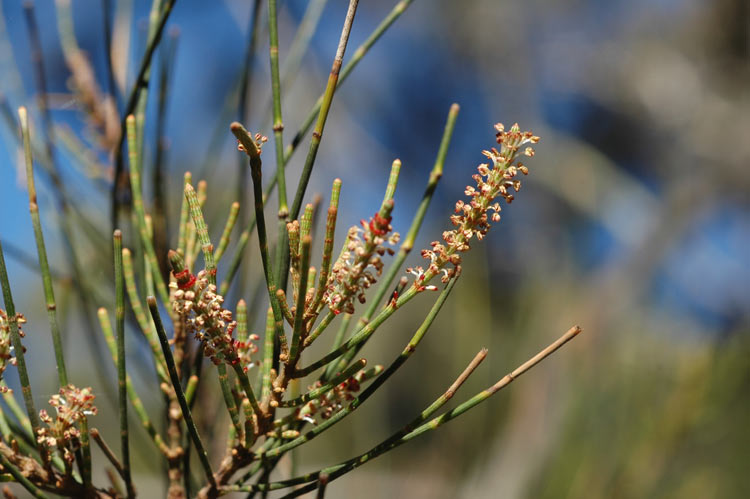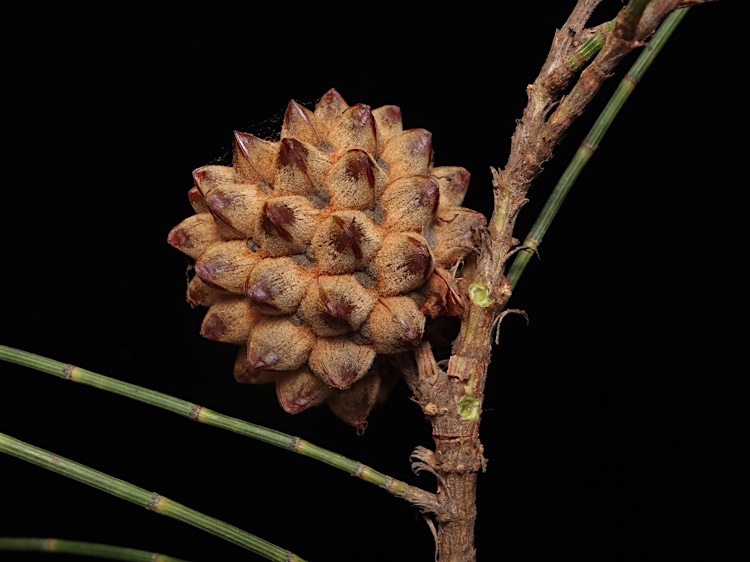Casuarina Cristata on:
[Wikipedia]
[Google]
[Amazon]

 ''Casuarina cristata'', commonly known as belah or muurrgu, is a species of flowering plant in the family
''Casuarina cristata'', commonly known as belah or muurrgu, is a species of flowering plant in the family

 ''Casuarina cristata'', commonly known as belah or muurrgu, is a species of flowering plant in the family
''Casuarina cristata'', commonly known as belah or muurrgu, is a species of flowering plant in the family Casuarinaceae
The Casuarinaceae are a family of dicotyledonous flowering plants placed in the order Fagales, consisting of four genera and 91 species of trees and shrubs native to eastern Africa, Australia, Southeast Asia, Malesia, Papuasia, and the Pacific ...
and is endemic
Endemism is the state of a species being found only in a single defined geographic location, such as an island, state, nation, country or other defined zone; organisms that are indigenous to a place are not endemic to it if they are also foun ...
to inland eastern Australia. It is a tree with fissured or scaly bark, sometimes drooping branchlets, the leaves reduced to scales in whorls
A whorl ( or ) is an individual circle, oval, volution or equivalent in a whorled pattern, which consists of a spiral or multiple concentric objects (including circles, ovals and arcs).
In nature
File:Photograph and axial plane floral diagram ...
of 8 to 12, the fruit long containing winged seeds (samara
Samara, formerly known as Kuybyshev (1935–1991), is the largest city and administrative centre of Samara Oblast in Russia. The city is located at the confluence of the Volga and the Samara (Volga), Samara rivers, with a population of over 1.14 ...
s) long.
Description
''Casuarina cristata'' is adioecious
Dioecy ( ; ; adj. dioecious, ) is a characteristic of certain species that have distinct unisexual individuals, each producing either male or female gametes, either directly (in animals) or indirectly (in seed plants). Dioecious reproduction is ...
tree that typically grows to a height of , has a
DBH of up to , and often produces suckers. Its bark is finely fissured or scaly and dark greyish brown. The branchlets are often drooping, up to long, the leaves reduced to scale-like teeth long, arranged in whorls of 8 to 12 around the branchlets. The sections of branchlet between the leaf whorls (the "articles") are long and wide. The flowers on male trees are arranged in spikes long, the anthers
The stamen (: stamina or stamens) is a part consisting of the male reproductive organs of a flower. Collectively, the stamens form the androecium., p. 10
Morphology and terminology
A stamen typically consists of a stalk called the filamen ...
long. The female cones are covered with rusty hairs when young, later glabrous
Glabrousness () is the technical term for a lack of hair, down, setae, trichomes, or other such covering. A glabrous surface may be a natural characteristic of all or part of a plant or animal, or be due to loss because of a physical condition, ...
, on a peduncle long. The mature cones are usually long and in diameter, the samaras long.
Taxonomy
''Casuarina cristata'' was first formally described in 1848 by Dutch botanistFriedrich Anton Wilhelm Miquel
Friedrich Anton Wilhelm Miquel (24 October 1811 – 23 January 1871) was a Dutch botanist whose main focus of study was on the flora of the Dutch East Indies.
Early life
Miquel was born in Neuenhaus and studied medicine at the University of Gr ...
in his book ''Revisio critica Casuarinarum'' from specimens collected by Allan Cunningham near the Lachlan River
The Lachlan River (Wiradjuri: ''Kalari'', ''Galiyarr'') is an intermittent river that is part of the Murrumbidgee catchment within the Murray–Darling basin, located in the Southern Tablelands, Central West, and Riverina regions of New Sou ...
. The specific epithet
In Taxonomy (biology), taxonomy, binomial nomenclature ("two-term naming system"), also called binary nomenclature, is a formal system of naming species of living things by giving each a name composed of two parts, both of which use Latin gramm ...
''cristata'' means 'crested', possibly referring to the long, pointed bracteoles
In botany, a bract is a modified or specialized leaf, associated with a reproductive structure such as a flower, inflorescence axis or cone scale.
Bracts are usually different from foliage leaves in size, color, shape or texture. They also look ...
on the cones. The tree is called ''muurrgu'' or ''murrgu'' in the Yuwaalaraay dialect of the Gamilaraay
The Gamilaroi, also known as Gomeroi, Kamilaroi, Kamillaroi and other variations, are an Aboriginal Australian people whose lands extend from New South Wales to southern Queensland. They form one of the four largest Indigenous nations in Austr ...
language around Walgett
Walgett is a town in northern New South Wales, Australia, and the seat of Walgett Shire. It is near the junctions of the Barwon and Namoi Rivers and the Kamilaroi and Castlereagh Highways. In 2021, Walgett had a population of 1,377.
In the ...
in northwestern New South Wales. Other common names include scaly-barked casuarina, scrub she-oak, ''billa'', ''ngaree'', bulloak and swamp oak.
Distribution and habitat
Belah is found from Clermont in central Queensland south through to Temora in southern New South Wales. It is an important component of the endangered Brigalow ecological community of inland New South Wales and Queensland. Here it is found as a dominant tree with brigalow (''Acacia harpophylla
''Acacia harpophylla'', commonly known as brigalow, brigalow spearwood or orkor, is an endemic (ecology), endemic tree of Australia. The Aboriginal Australian group the Gamilaraay peoples know the tree as Barranbaa or Burrii. It is found in ...
''), black gidyea ('' A. argyrodendron''), bimble box (''Eucalyptus populnea
''Eucalyptus populnea'', commonly known as poplar box, bimble box or bimbil box, is a species of small to medium-sized tree that is endemic to eastern Australia. It has rough, fibrous or flaky bark on the trunk and branches, egg-shaped, elliptic ...
''), Dawson River blackbutt ('' E. cambageana''), '' E. pilligaensis'' and the smaller trees such as wilga (''Geijera parviflora
''Geijera parviflora'', commonly known as wilga, is a species of shrub or small tree in the family Rutaceae and is endemic to inland parts of eastern Australia. It has drooping branches, linear to narrow lance-shaped leaves, small white flowers ...
'') and false sandalwood (''Eremophila mitchellii
''Eremophila mitchellii'', known commonly as false sandalwood and several other names, is a flowering plant in the figwort family, Scrophulariaceae and is endemic to Australia. It is a glabrous large shrub or small tree with flaky bark, white or ...
'') in open forest over mainly Cenozoic
The Cenozoic Era ( ; ) is Earth's current geological era, representing the last 66million years of Earth's history. It is characterized by the dominance of mammals, insects, birds and angiosperms (flowering plants). It is the latest of three g ...
clay plains. Other plants it grows with include boonaree (''Alectryon oleifolius
''Alectryon oleifolius'', commonly known as boonaree, inland rosewood or bullock bush (South Australia), is a species of small tree of the soapberry family Sapindaceae, native to Australia.
Taxonomy
The French botanist René Louiche Desfontain ...
''), sugarwood (''Myoporum platycarpum
''Myoporum platycarpum'', known by several common names including sugarwood, false sandalwood and ngural is a plant in the figwort family, Scrophulariaceae. It is rounded with bright green foliage as a young shrub and roughly fissured, dark gr ...
'') and nelia ('' Acacia loderi''). On limestone-based soils, it may have a dense understory
In forestry and ecology, understory (American English), or understorey (English in the Commonwealth of Nations, Commonwealth English), also known as underbrush or undergrowth, includes plant life growing beneath the Canopy (biology), forest ca ...
composed of pearl bluebush (''Maireana sedifolia
''Maireana sedifolia'', also known as the bluebush or pearl bluebrush is a compact shrub endemic to Australia, and found in New South Wales, Victoria, South Australia, Western Australia, and the Northern Territory. It is used in pasture and as a ...
'') or black bluebush ('' M. pyramidata'')
Ecology
Belah can reproduce by suckering from its root system, and clonal stands have been recorded. Seedlings only appear after periods of high rainfall.References
{{Taxonbar, from=Q5050936 cristata Fagales of Australia Trees of Australia Flora of New South Wales Flora of Queensland Taxa named by Friedrich Anton Wilhelm Miquel Plants described in 1848